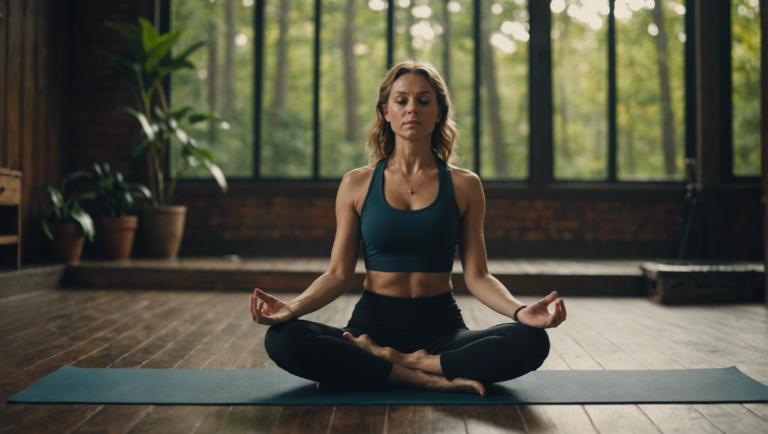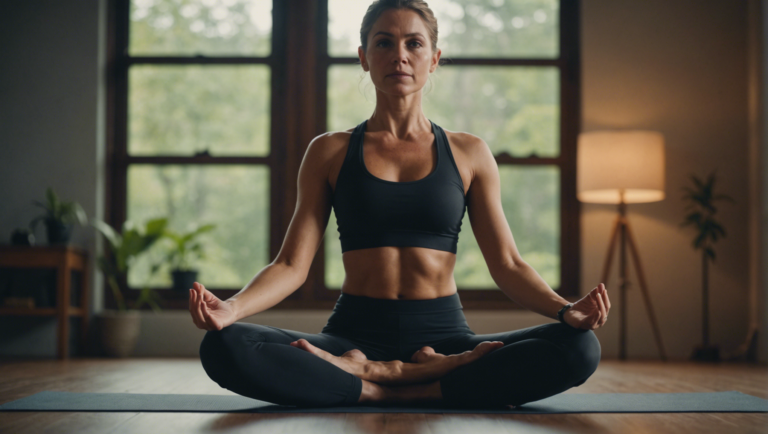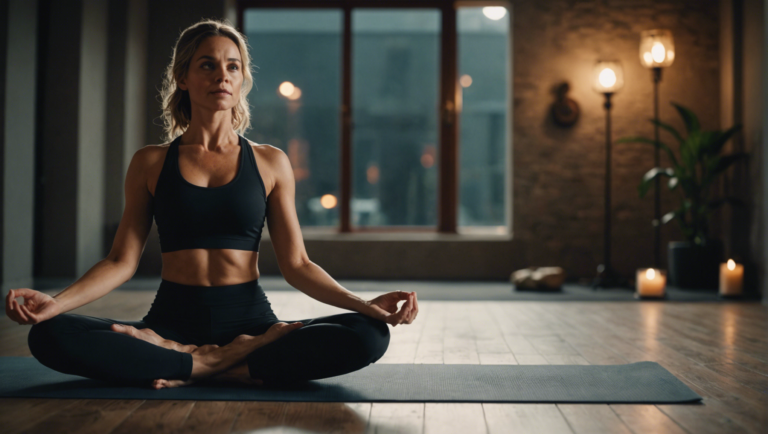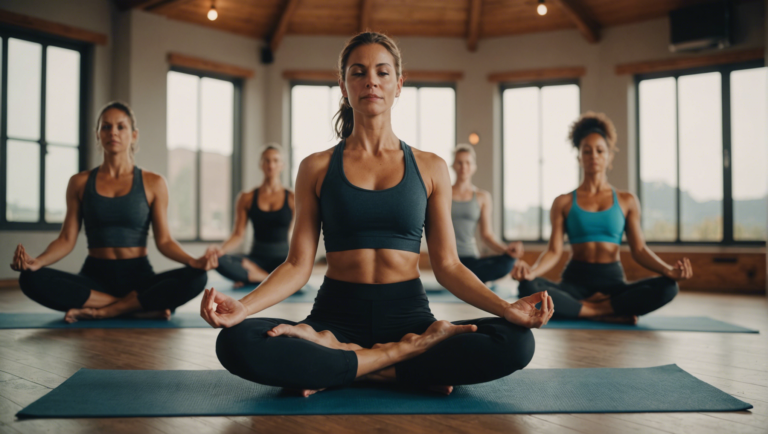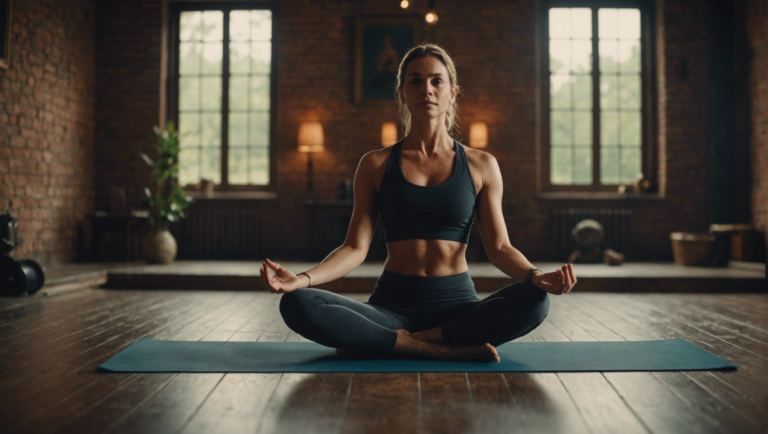Guidelines On How To Use Yoga Blocks For Enhanced Practice
Benefits of Incorporating Yoga Blocks into Your Practice
Benefits of Yoga Blocks into Your Practice
Enhanced Support and Stability
Yoga blocks are valuable props that can provide additional support and stability during your practice. These blocks help in maintaining proper alignment, especially for beginners or individuals with physical limitations. By using yoga blocks, you can modify poses to suit your body’s needs, making your practice more accessible and enjoyable. The added support can also help prevent injuries by reducing the risk of straining or overstretching muscles.
Increased Flexibility and Range of Motion
Yoga blocks into your practice can help enhance flexibility and increase your range of motion. By using blocks, you can gradually work towards deepening stretches and improving flexibility over time. Whether you are working on backbends, forward folds, or side stretches, yoga blocks allow you to ease into poses gently, making them more achievable and sustainable. As you progress in your practice, you may find that you need the blocks less frequently as your flexibility improves.
Correct Alignment and Posture
One of the key benefits of using yoga blocks is the ability to achieve correct alignment and posture in various poses. Blocks can assist in aligning the body properly, especially in poses where reaching the floor may compromise alignment. By using blocks to support different body parts, such as the hands, feet, hips, or spine, you can ensure that you are maintaining the right alignment throughout your practice. This focus on alignment not only helps prevent injuries but also allows you to experience the full benefits of each pose.
Deepening Your Practice
Yoga blocks offer endless possibilities for deepening your practice and exploring poses in new ways. Whether you are practicing restorative yoga, yin yoga, or vinyasa flow, blocks can add versatility and creativity to your routine. You can use blocks to challenge yourself by trying more advanced variations of poses or to simply experience familiar poses from a different perspective. This exploration can lead to a deeper understanding of your body and its capabilities, ultimately enriching your overall yoga experience.
Relaxation and Stress Relief
In addition to enhancing the physical aspects of your practice, yoga blocks can also contribute to relaxation and stress relief. Using blocks to support the body in restorative poses can promote deep relaxation and release tension stored in the muscles. By allowing the body to fully relax into the support of the blocks, you can experience a sense of ease and calmness, making yoga practice a therapeutic and rejuvenating experience. blocks into your practice can help create a more holistic approach to well-being, addressing both the physical and mental aspects of yoga.
The benefits of incorporating yoga blocks into your practice are vast and multifaceted. From providing enhanced support and stability to promoting relaxation and stress relief, these versatile props can truly elevate your yoga experience. Whether you are a beginner looking to establish a strong foundation or an experienced practitioner seeking to deepen your practice, yoga blocks offer valuable support and endless possibilities for exploration. By embracing the use of blocks in your practice, you can enhance your flexibility, improve your alignment, and discover new dimensions of strength and awareness on your yoga journey.
Various Ways to Utilize Yoga Blocks for Different Poses
Yoga blocks are versatile props that can enhance and deepen your yoga practice by providing stability, support, and alignment assistance in various poses. By incorporating yoga blocks into your practice, you can explore new possibilities, improve your alignment, and make challenging poses more accessible. Here are some guidelines on how to effectively use yoga blocks to elevate your practice.
Choosing the Right Yoga Block
When selecting a yoga block, consider the material, size, and density. Yoga blocks are typically made of foam, cork, or wood. Foam blocks are lightweight and provide a bit more give, making them suitable for beginners or those looking for extra cushioning. Cork blocks are heavier and offer more stability, making them ideal for advanced practitioners. Wood blocks are sturdy and durable, providing strong support for various poses. Choose a block that feels comfortable and supportive for your practice.
Supporting Balance and Alignment
Yoga blocks can be used to improve balance and alignment in standing poses such as Triangle Pose or Half Moon Pose. Place a block on the outer foot in Triangle Pose to help maintain stability and alignment. In Half Moon Pose, a block under the bottom hand can provide support and extension, allowing you to focus on opening your chest and hips.
Deepening Stretches and Extensions
Yoga blocks can help deepen stretches and extensions in poses like Pigeon Pose or Seated Forward Fold. In Pigeon Pose, placing a block under the hip of the front leg can provide support and allow for a deeper hip opening. For Seated Forward Fold, holding onto a block can help lengthen the spine and reach forward with ease, especially for those with tight hamstrings.
Enhancing Backbends and Heart Openers
Backbends and heart-opening poses like Bridge Pose or Camel Pose can benefit from the use of yoga blocks. Placing a block under the sacrum in Bridge Pose can elevate the hips and increase the opening of the chest and shoulders. In Camel Pose, holding a block between the thighs can help maintain alignment and engagement in the legs while focusing on the backbend.
Restorative Poses and Relaxation
Yoga blocks can also be used to support the body in restorative poses for relaxation and rejuvenation. In Supported Fish Pose, a block placed under the upper back can provide gentle opening in the chest and throat while supporting the spine. For Supported Child’s Pose, a block under the forehead can help release tension in the shoulders and promote relaxation.
Yoga blocks into your practice can enhance your overall experience by facilitating proper alignment, deepening stretches, and providing support where needed. Experiment with different ways to use yoga blocks in various poses to discover how they can benefit your practice. Remember to listen to your body and adjust the props as needed to ensure a safe and effective practice. Yoga blocks are valuable tools that can help you progress in your yoga journey and find greater ease and openness in your practice.
Tips for Choosing the Right Yoga Blocks for Your Needs
Yoga blocks are essential props that can greatly enhance your yoga practice by providing stability, support, and alignment assistance. However, with the variety of yoga blocks available in the market, choosing the right one for your needs can be overwhelming. Here are some tips to help you select the perfect yoga blocks for your practice.
Understanding Different Yoga Block Materials
When choosing yoga blocks, the first thing to consider is the material. Yoga blocks are commonly made of foam, cork, or bamboo. Foam blocks are lightweight and provide a soft surface for comfort, making them suitable for beginners or those with sensitive joints. Cork blocks are sturdy, eco-friendly, and provide a firm surface for better stability. Bamboo blocks are durable, environmentally friendly, and offer a combination of firmness and comfort. Consider the feel and durability of each material to determine which one suits your practice best.
Selecting the Right Size and Shape
Yoga blocks come in various sizes, typically ranging from 3 to 4 inches in height. The most common size is 4x6x9 inches, but you can also find smaller and larger options. The size you choose should depend on your personal preference and flexibility level. Those with smaller hands or less flexibility may prefer a smaller block for an easier grip, while taller individuals or those needing more support may opt for a larger block. Additionally, consider the shape of the block – some are rectangular, while others have rounded edges. Pick a shape that feels comfortable and stable for your practice.
Quality and Durability
Investing in high-quality yoga blocks is important for longevity and performance. Check the density of the block – a denser block will provide more stability during poses. Look for blocks that are solid and sturdy to support your weight without deforming. Consider the durability of the material and ensure that it can withstand regular use without wearing out quickly. While quality blocks may be a bit more expensive, they will last longer and ultimately provide better support for your practice.
Eco-Friendly Options
For those concerned about sustainability, there are eco-friendly yoga block options available. Cork and bamboo blocks are natural, renewable materials that have minimal impact on the environment. By choosing eco-friendly blocks, you not only support the planet but also enjoy the benefits of using non-toxic and chemical-free props in your practice.
Personal Preference and Comfort
Ultimately, the best yoga blocks for you are the ones that feel comfortable and supportive in your practice. Consider your personal preferences, such as texture, weight, and aesthetics, when selecting yoga blocks. Test out different blocks to see how they feel in various poses and choose the ones that enhance your practice and help you deepen your stretches.
By keeping these tips in mind, you can make an informed decision when choosing the right yoga blocks for your needs. Remember that the perfect yoga block is the one that supports you physically and enhances your overall practice experience.
Common Mistakes to Avoid When Using Yoga Blocks
Yoga blocks are valuable props that can enhance your yoga practice by providing stability, support, and alignment. However, using them incorrectly can hinder your progress and even lead to injuries. To make the most of your yoga blocks and avoid common mistakes, follow these guidelines:
Lack of Proper Alignment
One of the most common mistakes when using yoga blocks is placing them in the wrong position, which can disrupt your alignment. Ensure that the blocks are positioned correctly to support your body in each pose. For example, when using a block for a standing forward fold, place it directly under your hands to maintain a straight spine and proper alignment.
Using the Wrong Height
Yoga blocks come in different sizes to accommodate various body types and flexibility levels. Using the wrong height of the block can affect the effectiveness of the pose. Opt for a higher block if you need additional support or a lower block if you require less elevation. Experiment with different block heights to find what works best for your body.
Over-Reliance on Blocks
While yoga blocks are beneficial for providing support and stability, overusing them can inhibit your progress. Avoid becoming overly reliant on blocks in every pose. Work on gradually decreasing the support from blocks as you build strength and flexibility. Use them as a tool to improve your practice, not as a crutch.
Neglecting to Breathe Mindfully
Mindful breathing is an essential aspect of yoga practice that should not be overlooked, even when using props like blocks. Focus on synchronizing your breath with your movements, whether you are using a block or not. Engaging in proper breathing techniques can help deepen your practice and cultivate mindfulness on and off the mat.
Forgetting to Adjust Block Placement
It’s common to set up yoga blocks at the beginning of a practice and forget to readjust them as needed throughout the session. Be mindful of your body’s alignment and comfort level in each pose. Feel free to move or reposition the blocks to better suit your evolving needs and optimize your practice.
Relying Solely on Visual Cues
While observing demonstrations and following visual cues from instructors can be helpful, relying solely on visual guidance may lead to improper block usage. Focus on how the pose feels in your body rather than how it looks externally. Pay attention to sensations and alignment cues to make the most of your yoga block practice.
Using yoga blocks mindfully and purposefully can enhance your practice and deepen your connection to each pose. By avoiding these common mistakes and following the guidelines provided, you can maximize the benefits of incorporating yoga blocks into your yoga routine. Remember to listen to your body, prioritize proper alignment, and breathe consciously to elevate your practice to new heights.
Advanced Techniques for Enhancing Your Yoga Practice with Blocks
Yoga blocks are versatile props that can greatly enhance your yoga practice by providing support, stability, and alignment. When used correctly, yoga blocks can help you deepen your stretches, improve your alignment, and make challenging poses more accessible. In this article, we will explore advanced techniques for maximizing the benefits of using yoga blocks in your practice.
Proper Alignment and Stability
One of the key benefits of using yoga blocks is their ability to help you maintain proper alignment in your poses. Whether you are a beginner or an advanced yogi, aligning your body correctly is essential for maximizing the benefits of each pose. Placing a block under your hand in poses like Triangle or Half Moon can help you reach the floor with better alignment, preventing strain on your muscles and joints.
Deepening Your Stretches
Yoga blocks can also be used to deepen your stretches safely. By using blocks to bring the floor closer to you, you can gradually increase your flexibility over time. For example, in Seated Forward Fold, placing a block under your hands can help you relax into the pose and release tension in your hamstrings and lower back. Remember to listen to your body and only go as deep into a stretch as feels comfortable for you.
Building Core Strength
Yoga blocks into your practice can also help you build core strength. By using blocks in poses like Plank or Side Plank, you can engage your core muscles more effectively and work towards greater stability and balance. For an extra challenge, try lifting one leg or arm while using the blocks for support to further engage your core muscles.
Balancing Poses
Balancing poses can be some of the most challenging poses in yoga, but yoga blocks can provide the support you need to find balance and stability. In poses like Tree Pose or Warrior III, placing a block under your foot or hand can help you focus on your alignment and gradually progress towards mastering the pose without compromising your stability.
Restorative Poses
Yoga blocks are also invaluable props for practicing restorative yoga poses. In poses like Supported Bridge or Supported Child’s Pose, using blocks can help you relax into the pose more deeply and release tension throughout your body. Restorative poses are great for reducing stress, promoting relaxation, and rejuvenating both the body and mind.
Yoga blocks are excellent tools for enhancing your yoga practice at any level. Whether you are looking to improve your alignment, deepen your stretches, build strength, work on balancing poses, or indulge in restorative poses, incorporating yoga blocks into your routine can take your practice to the next level. Experiment with different ways of using blocks in your practice and discover how these props can support you in reaching your yoga goals.
Conclusion
By incorporating yoga blocks into your practice, you can enhance your overall yoga experience in various ways. Whether you are a beginner or an advanced practitioner, these props can help you deepen your poses, improve alignment, and provide support where needed. Understanding the benefits of using yoga blocks, learning different ways to utilize them for various poses, choosing the right blocks for your needs, avoiding common mistakes, and exploring advanced techniques can all contribute to a more fulfilling and beneficial practice.
When it comes to the benefits of incorporating yoga blocks into your practice, it is essential to recognize how they can assist in improving flexibility, stability, and alignment. By using blocks, you can access poses that may otherwise be challenging, allowing you to experience the full benefits of each posture. Furthermore, yoga blocks provide support, helping you maintain proper alignment and prevent injury during your practice.
Utilizing yoga blocks for different poses opens up a world of possibilities for enhancing your practice. Whether you are looking to deepen a stretch, improve balance, or modify a pose to suit your body’s needs, blocks can be invaluable tools. From using them as extensions of your arms in standing poses to providing height and support in seated postures, the versatility of yoga blocks allows for creative exploration and growth in your practice.
Choosing the right yoga blocks for your needs is crucial to ensure maximum benefit and comfort during your practice. Consider factors such as size, material, and density when selecting blocks that are suitable for you. By investing in quality blocks that align with your body and practice requirements, you can optimize your yoga experience and enjoy the support and stability they provide.
Avoiding common mistakes when using yoga blocks is essential to prevent injury and make the most of their benefits. Some common errors include using blocks at incorrect heights, placing them improperly for support, or relying too heavily on them instead of focusing on building strength and stability. By being mindful of these pitfalls and practicing proper alignment and technique, you can make the most of your props and progress in your yoga journey.
For those seeking to take their yoga practice to the next level, exploring advanced techniques for enhancing your practice with blocks can offer new challenges and opportunities for growth. From using blocks in inversions and backbends to experimenting with prop-assisted balancing poses, advanced practitioners can leverage yoga blocks to deepen their practice and expand their skill set.
Yoga blocks into your practice is a journey of discovery and self-improvement. By understanding the benefits, exploring different ways to utilize blocks, choosing the right props, avoiding common mistakes, and delving into advanced techniques, you can enrich your yoga practice and experience profound physical, mental, and spiritual transformation on and off the mat. Embrace the power of yoga blocks and let them support you on your path to holistic well-being and self-realization.
